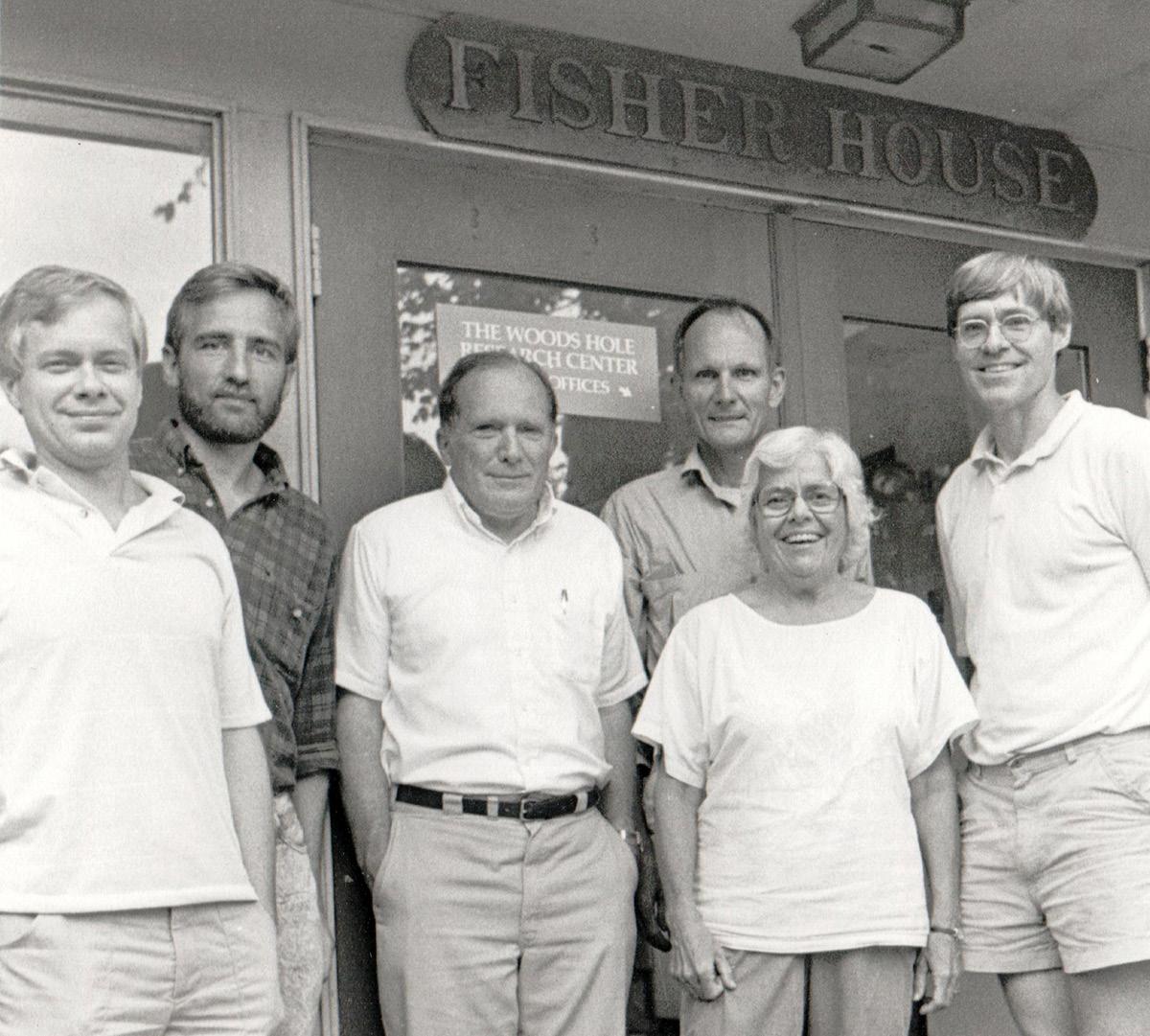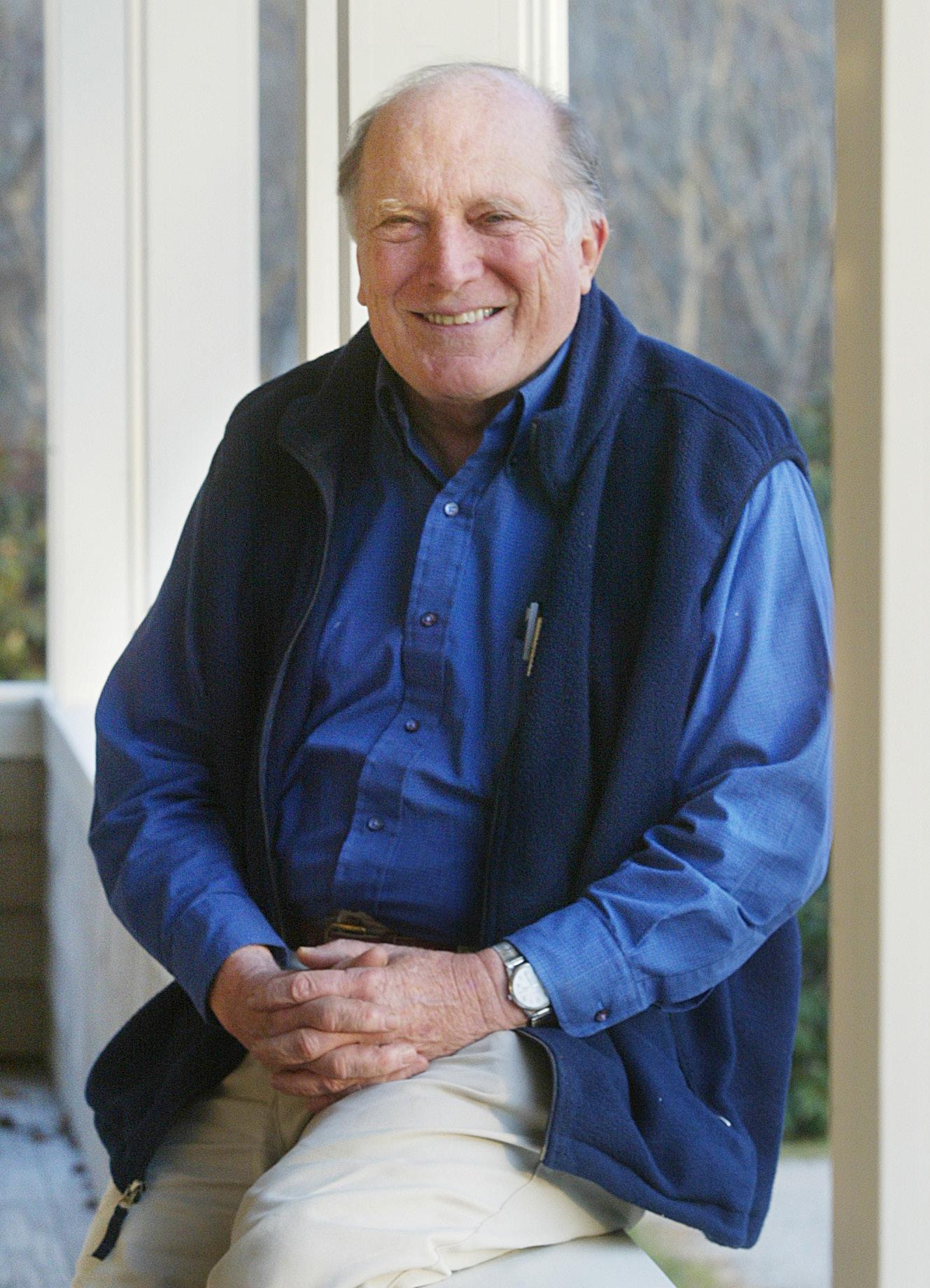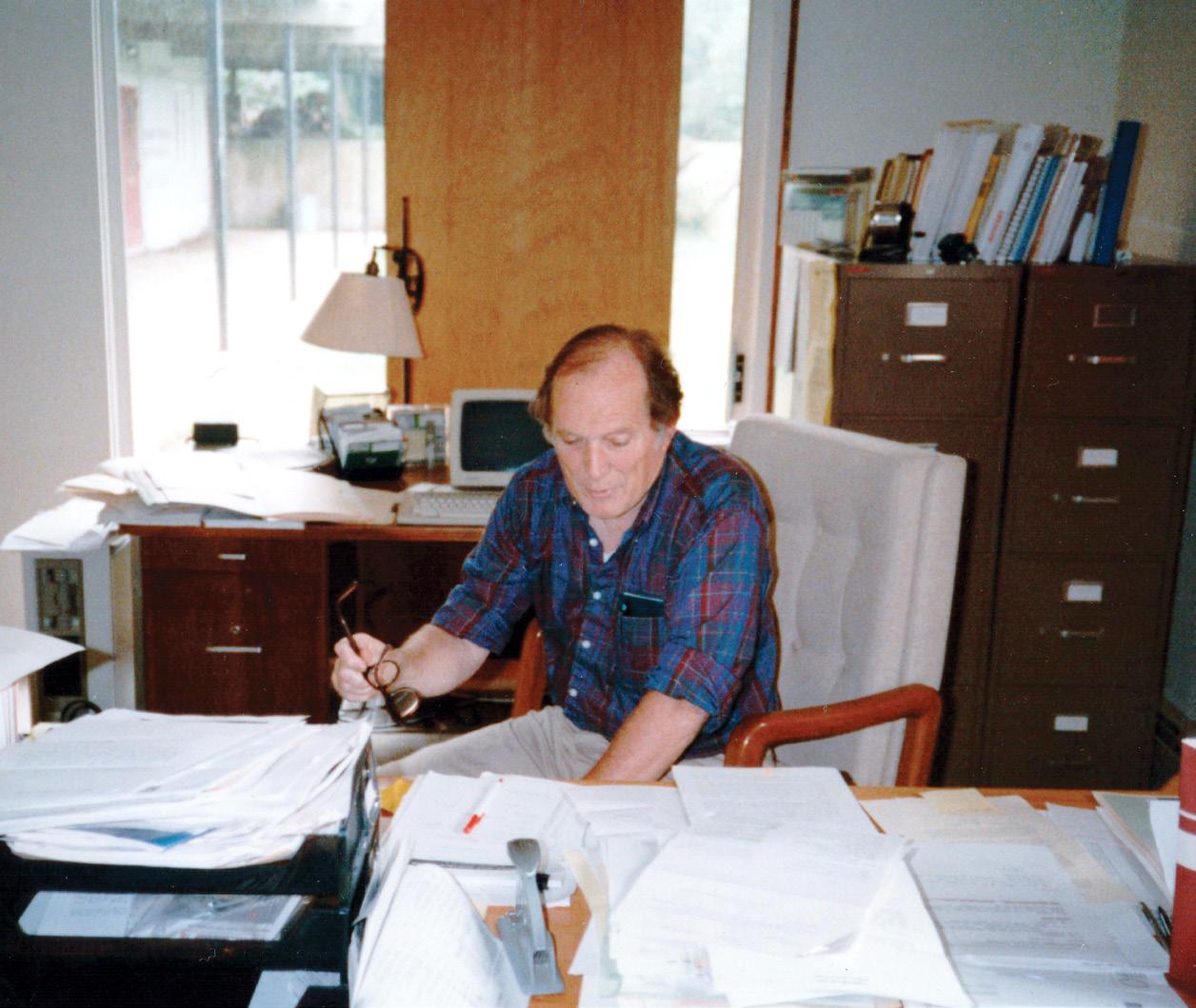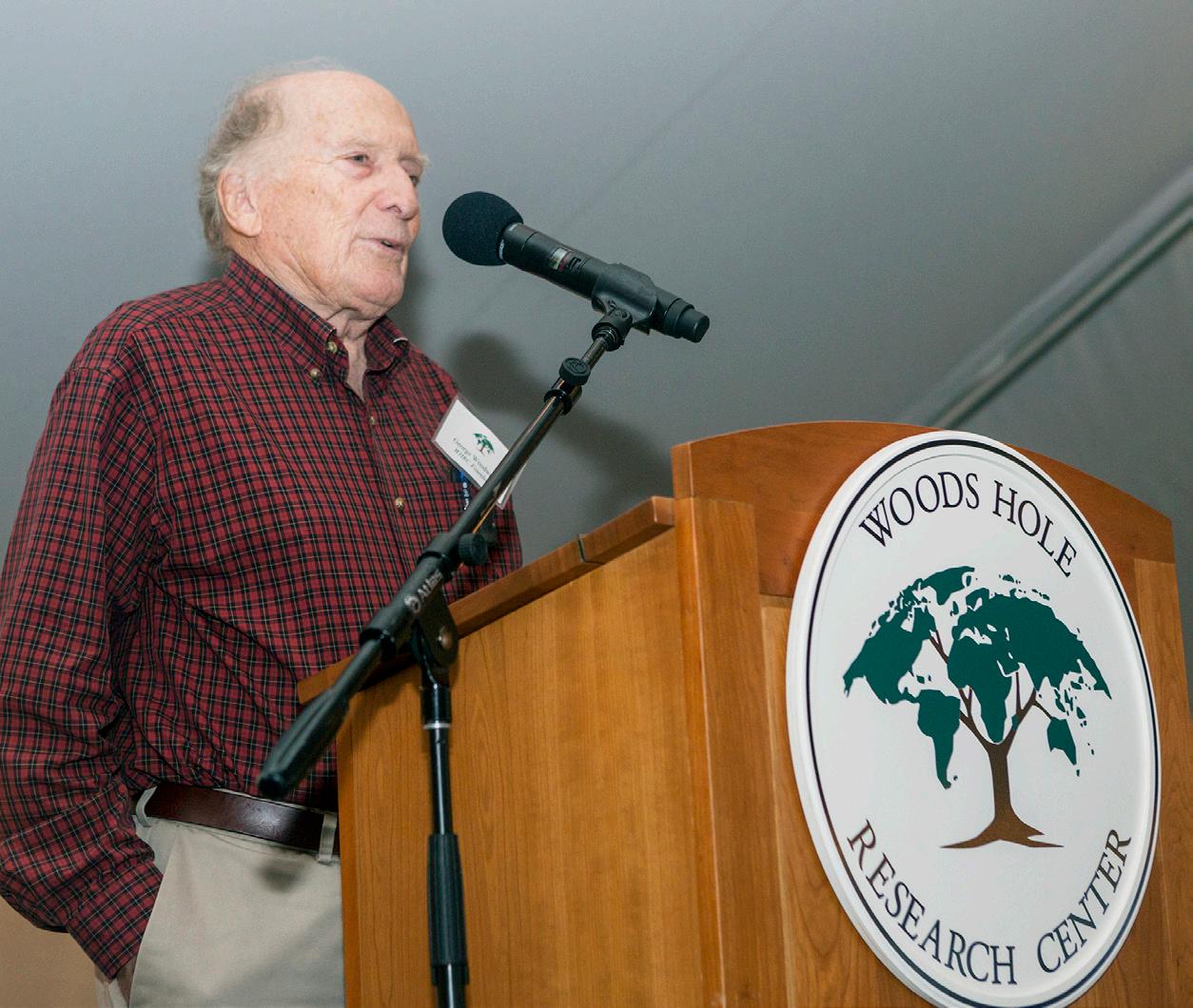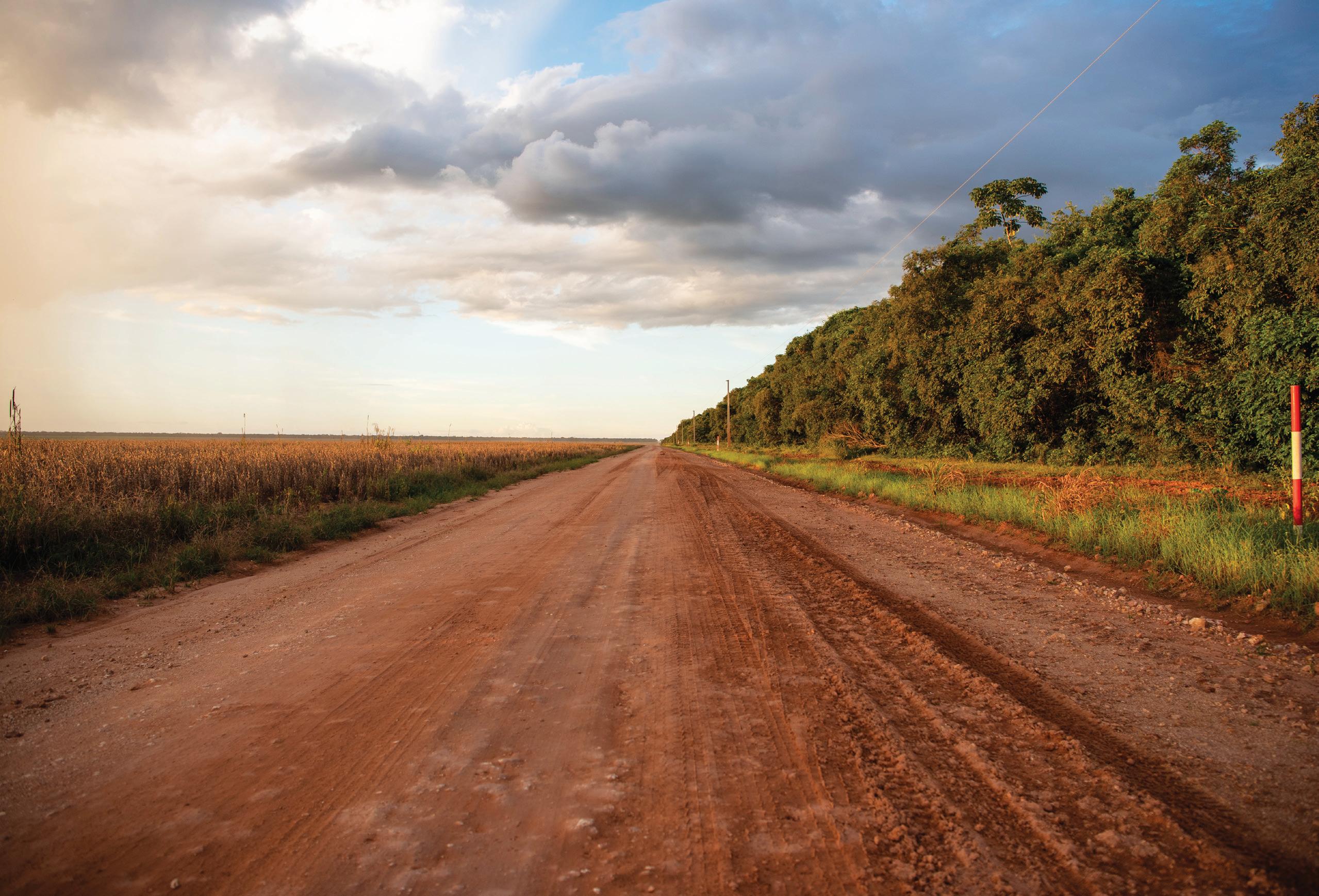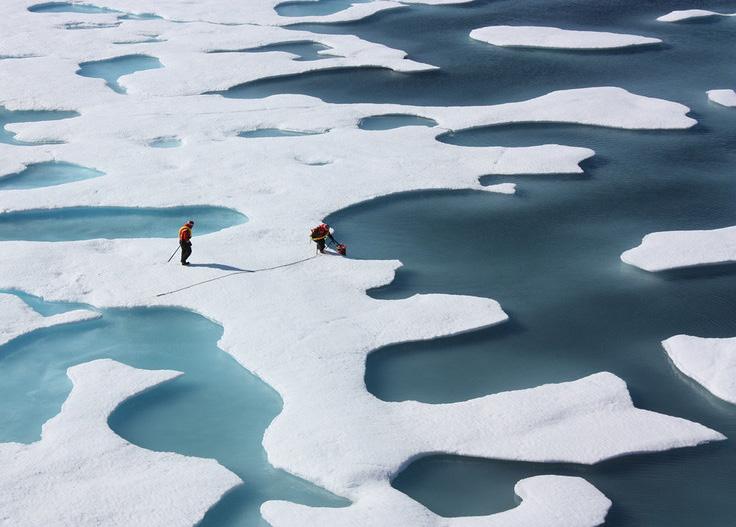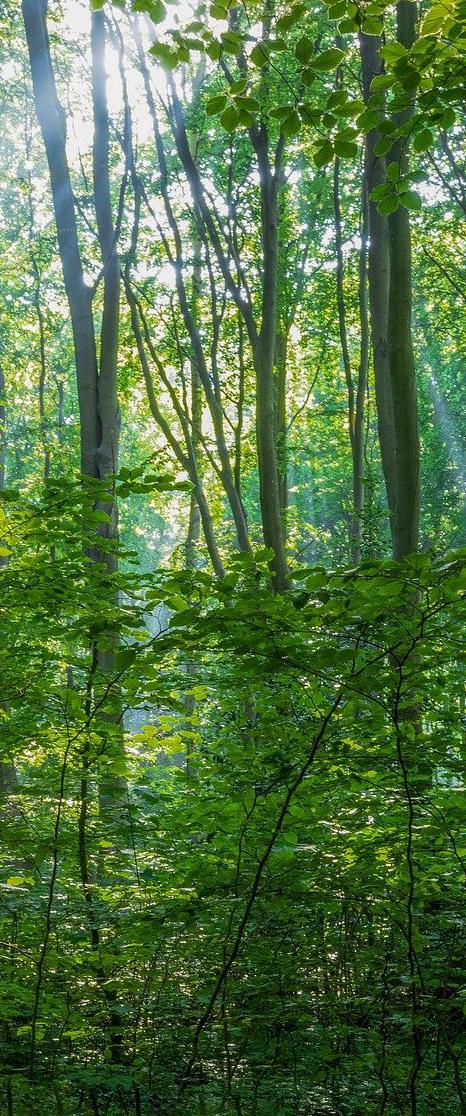Dr. George Woodwell, pioneer in climate science and founder of Woodwell Center Research Center, passes away at 95 / 02
20 years at Tanguro Research Station / 04
Melting Arctic sea-ice is affecting precipitation patterns / 05
In the news: highlights / 05
With deep sadness, Woodwell Climate Research Center announces the passing of Dr. George Masters Woodwell, a pioneer and visionary in the field of climate science, beloved family member, friend, and mentor, and Founder and Director Emeritus of our Center. He passed away on Tuesday, June 18, 2024 surrounded by his family. He was 95. Woodwell dedicated his career to ecological research, and to uplifting science to inform critical global policy and urgentlyneeded solutions to some of the biggest environmental issues of the late twentieth century—making enormous contributions to the world through his work of scientific understanding, environmental sustainability, and climate stability.
At a time when the biological sciences were increasingly focused on the molecular and cellular level, Dr. Woodwell was steadfast in his belief that ecosystem-level understanding was critical. He started and led ecological research programs within the University of Maine, Brookhaven National Laboratory, and the Marine Biological Laboratory.
He worked tirelessly to bring science into the public discourse. Based on his research demonstrating the damaging effects of the pesticide DDT, he was a strong scientific voice in the push to ban it. He conducted groundbreaking research on the ecological effects of nuclear radiation. Ultimately, he turned his attention to what was at the time known as “the carbon dioxide problem.” He provided prescience testimony at the first Congressional
Dr. George Woodwell, pioneer in climate science and founder of Woodwell Climate Research Center, passes away at 95
hearing on climate change in 1986, highlighting issues—the global ramifications of Arctic warming and the importance of forests in the climate system—that have been enduring pillars of climate research since.
Dr. Woodwell also played an outsized role in building today’s ecosystem of science-based advocacy and policymaking, helping found preeminent environmental non-profits including Environmental Defense Fund, Natural Resources Defense Council, and World Resources Institute. Additionally, Dr. Woodwell was a former chairman of the board of trustees of the World Wildlife Fund US, and former president of the Ecological Society of America.
He saw the need for international policy and governance to address climate change, guided by global scientific expertise, and played important roles in the creation of what became the Intergovernmental Panel on Climate Change, which was recognized in 2007 with a Nobel Peace Prize, and the United Nations Framework Convention on Climate Change—the treaty that has driven and guided international climate negotiations for more than thirty years.
And in 1985, he founded the Woods Hole Research Center— renamed Woodwell Climate Research Center in his honor in 2020—as an independent organization dedicated to not only conducting essential climate research, but to harnessing it to inform public- and private-sector decision making at all levels
above: portrait photo by Daniell Webb
of society. Dr. Woodwell led the Center for more than twenty years, was a mentor and friend to many of the Center’s staff, and remained a trusted advisor to Center leadership to the end.
“Our entire staff and community is deeply saddened by George’s passing, and our thoughts are with George’s many friends and his family today,” said Max Holmes, President of the Woodwell Climate Research Center. “What drew people to George was not just his intellect or foresight, but also his energy, wisdom, and sense of humor. His ability to sustain outrage and indignation at environmental destruction, while holding an abiding love of the natural world and a clear, positive vision of a better world for all was an inspiration for many.”
That vision was the subject of Dr. Woodwell’s final book, A World to Live In: An Ecologist’s Vision for a Plundered Planet, published in 2016. Over the course of his career, Dr. Woodwell has published more than 300 scientific papers and authored five books. He was a member of the National Academy of Sciences and a Fellow of the American Academy of Arts and Sciences. He received the 1996 Heinz Environmental Prize, the John H. Chafee Excellence in Environmental Affairs Award of 2000, and the Volvo Environment Prize of 2001.
Born on October 23, 1928 to Virginia Sellers Woodwell and Phillip McIntire Woodwell, Dr. Woodwell received his bachelor’s degree from Dartmouth College, his master’s degree and doctorate in botany from Duke University, and served as a commissioned officer in the U.S. Navy from 1950 to 1953. He was an avid sailor, and loved his family’s farm and sawmill in Maine.
He is survived by his wife, Katharine Rondthaler Woodwell, his children and their spouses, Caroline Woodwell (Chris DeForest),
Marjorie Woodwell (Woody Swan), Jane Woodwell (Chris Soper), John Woodwell (Marie Hull), and his grandchildren Katharine Soper, David Soper, John DeForest, and Robert DeForest.
The family welcomes gifts in Woodwell’s memory made to the George M. Woodwell Endowment Fund at Woodwell Climate Research Center. A remembrance service will be held at the Center in Falmouth, MA in coming weeks; details to follow.
George’s many contributions to environmental science and advocacy were detailed in a New York Times obituary.
The Falmouth Enterprise obituary features quotes from notable colleagues, including Max Holmes, Skee Houghton, and John Holdren.
The Marine Biological Laboratory, where George founded the Ecosystems Center in 1975, posted a brief obituary.
World Resources Institute, where George was a founding trustee, shared a touching remembrance on LinkedIn, noting the ongoing connection between our organizations through the participation of WRI’s Christina DeConcini on our Board of Directors.
Woods Hole Oceanographic Institution shared a tribute on Facebook.
IN THE NEWS SUPPORT
Donate to the endowment fund at: woodwellclimate.org/ george-woodwell-fund
left: George Woodwell at his desk in the early years of Woods Hole Research Center.
right: George speaks to event attendees at a summer gala. / photo by Lauren Owens Lambert
20 years at Tanguro Field Station
For two decades, this research station has stood at the southern edge of the Amazon rainforest as a perfect natural laboratory to study the changing biome
INTRODUCTION
The sky opens up just as our truck leaves the last stretch of paved road. Water Program Director Dr. Marcia Macedo squints to stay focused on what she can see between wipes of the windshield. Within minutes, our path is transformed from a dirt road into a riverbed of bright orange mud, rutted from the passing of heavy trucks carrying soy off surrounding farms. Macedo swerves to dodge bumps and dips, but pretty soon there are more of them than there is flat road. We brace for the puddles, peering out windows spattered with orange spray.
It’s a Monday morning in the rainy season at the edge of the Amazon, and we’re commuting to work.
Tanguro Field Station lies about an hour’s drive from Canarana, the nearest town, located in a region of Brazil sometimes referred to as the arc of deforestation. Several decades ago, agriculture began surging into the southern reaches of the Amazon rainforest here, carving out rectangular patches of farmland from primary forest. For most of our drive, we are flanked only by mega-fields of soybean or scrubby cattle pastures.
Macedo, who has been conducting research at Tanguro since 2007, remembers a time when the drive could be marked by crossing a threshold from the Cerrado—Brazil’s woody savanna
biome—into the Amazon. Now, clearing near the road has obscured that natural transition. Eventually though, clumps of lush green loom closer out of the rain and we know we’re nearly there.
Since its founding in 2004, Tanguro has offered researchers from around the world the opportunity to investigate big questions about how climate change and deforestation are affecting the Amazon. Macedo and her team have come to study Tanguro’s streams and reservoirs.
We pull to a stop outside the research station, hauling suitcases wrapped in plastic trash bags out of the truck bed. Research Assistant Zoë Dietrich clutches several vital electronic components to her chest, ferrying them to a screened-in porch to keep them out of the rain. Postdoctoral researcher Dr. Abra Atwood starts digging out sediment core tubes from a pile of equipment. The clouds drift off and the work day at Tanguro begins.
A road running between forest and field at Tanguro. / photo by Mitch Korolev
right: U.S. Coast Guard Arctic research mission. / photo by Kathryn Hansen/ NASA Goddard Space Flight Center
Sarah Ruiz Science Writer and Editor
Melting Arctic sea-ice is affecting precipitation patterns
Sea-ice retreat in the Arctic Ocean is contributing to heavier precipitation in the Northern Hemisphere
Jennifer Francis Senior Scientist
Quihong Tang Professor, Institute of Geographic Sciences and Natural Resources Research, Chinese Academy of Sciences
The rapid warming of the Arctic has caused substantial sea-ice melt, increased ice-free area, and enhanced evaporation from Arctic Marginal Seas (AMS).
According to a recent study, the resulting increased atmospheric moisture and latent energy have profound implications for precipitation patterns over Northern Hemisphere land areas.
During the cold season (October to March) from 1980 to 2021, the seaice area in AMS declined by nearly 30% (approximately 2 million square kilometers), accounting for 32% of the increase in AMS-sourced precipitation on lands in the Northern Hemisphere land.
This means that for every one million square kilometers of ice loss there was a 16% increase in the contribution of water evaporated from AMS to precipitation over land.
“The study reveals that the enhanced moisture supply has a surprisingly pronounced impact on high-latitude land precipitation,” stated the corresponding author, Dr. Qiuhong Tang. Despite AMS-sourced moisture accounting for only 8% of the total high-latitude land precipitation, its dramatic increase owing to ice loss contributed 42% to the overall precipitation increase. “This additional moisture has also contributed
In the news: highlights
A widely-syndicated Reuters article on record fires in Brazil’s Pantanal wetlands quoted Mike Coe on the influence of climate change on El Niño.
Multiple radio stations, including FOX 8 and CBS 2, aired a segment on extreme heat in New Orleans, referencing Woodwell Climate’s risk assessment for the region.
Foster Brown was interviewed live on TV Band’s “Café com Notícias” about the low water levels in the Acre River (see 1:18:00, Portuguese).
An article in Agência Pará highlighted the Pará governor’s participation in the Tanguro Science Symposium, hosted by IPAM and Woodwell Climate (Portuguese).
New Bedford Light published an article on salt marsh conservation work using runnels in Dartmouth MA, and mentioned Woodwell Climate’s collaboration in a test run of the method in Fairhaven, MA.
An article on IPAM’s website covers the Tanguro Science Symposium in Brasília, celebrating 20 years of Tanguro Field Station (Portuguese).
to increased extreme snowfall in highlatitude land areas,” added the lead author and Ph.D. candidate Yubo Liu, “which could help mitigate the impact of climate warming on melting of the Greenland ice sheet.”
“Our findings highlight the important contribution of Arctic sea-ice retreat to Northern Hemisphere land precipitation through moisture cycling, which underscores the many impacts of rapid Arctic change on the global climate system,” added co-author Dr. Jennifer A. Francis. “These insights help inform decision-makers striving to manage impacts of the climate crisis.”
The ARC Centre of Excellence for Climate Extremes published an article covering a publication co-authored by Arden Burrell, which found that less than 4% of drylands will turn into desert under climate change.
Québec Science published an article covering how permafrost is a “blind spot” in climate models, prompted by the Nature comment led by Christina Schädel with contributions from Brendan Rogers, Elchin Jafarov, and Sue Natali (French).
Scott Zolkos’ quote in The Guardian has been included in more than two dozen other stories (in multiple languages), including this one in Smithsonian Magazine, about Alaska’s rivers turning orange due to minerals released by permafrost thaw.
Jen Francis was quoted in a Bloomberg News story about the finance sector and expected economic impacts of extreme summer weather.
Rich Birdsey was quoted by The Columbian in a story about the challenges of using U.S. Forest Service mature and oldgrowth forest inventory maps for management purposes due to relatively low resolution.
@woodwellclimate #sciencefortheworld
Please help us to conserve paper. To receive this newsletter electronically, please send your email address to info@woodwellclimate.org.
Stone, Foster Brown, George Woodwell, Walter Matherly, Katharine Woodwell, and Skee Houghton.
